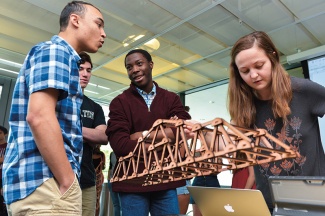Since I arrived at Tulane 10 years ago, I have accumulated a wealth of stories and anecdotes that capture the magic of this great institution. But one story in particular stands out. In 2017, an interdisciplinary team of Tulane students won the NASA Big Idea Challenge. With majors ranging from engineering physics to architecture to economics, the Tulanians developed a truly innovative proposal that bested teams from top aerospace engineering programs nationwide. To my mind, this story encapsulates the characteristics that set Tulane apart: our interdisciplinarity, our collaborative culture and our outward-looking focus. A primary goal of my presidency has been to build an environment that leans into these traits, which are establishing us as a global leader in research and education.
From the moment undergraduates apply to Newcomb-Tulane College, they encounter an academic environment that erases the traditional boundaries between disciplines. Across the university, we have invested in interdisciplinary programs and centers that tackle the complex problems of our world, as well as state-of-the-art spaces that encourage creative collaboration. We have established 10 presidential chairs to recruit world-renowned faculty whose expertise spans fields. These efforts have contributed to an explosion in research at Tulane, with external funding up 70 percent over the past six years.
Interdisciplinarity can only thrive in an atmosphere of collaboration — and this is another area where Tulane stands out. While it may be harder to quantify than the stratospheric growth of our research enterprise or the steadily climbing caliber of our students, our relational culture sets the standard for relationship-building and emotional intelligence. We are leveraging this culture with a $1 billion investment in transforming our campuses to facilitate engagement and connection between students, faculty, staff and the wider community.































































